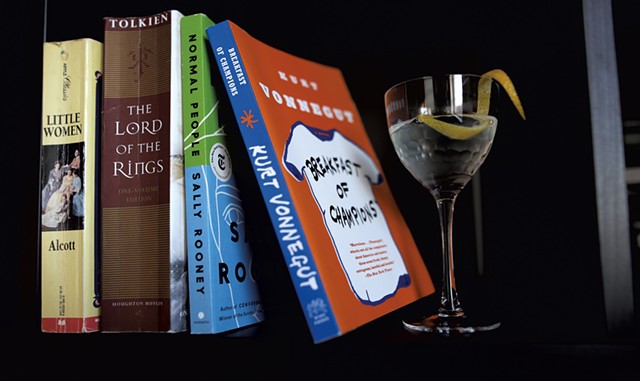
- Jordan Barry ©️ Seven Days
- A Breakfast of Champions gin martini on a bookshelf
I still remember my favorite assignment from high school. It was for Advanced Placement English Literature and Composition my junior year. After the intense AP exam, my classmates and I competed in a lighthearted literary bake-off.
We could choose to create food from any of the books or plays we'd read that year, which included Aldous Huxley's Brave New World, George Orwell's 1984, Vladimir Nabokov's Pnin, works by William Shakespeare, and Tom Stoppard's Rosencrantz and Guildenstern Are Dead.
I convinced my bake-off teammate that we should reference Stoppard's absurdist play and its source material, Hamlet, wherein Shakespeare deploys the characters Rosencrantz and Guildenstern to represent the notion that things aren't always as they seem.
That theme in mind, we baked two batches of cupcakes: One was chocolate with vanilla frosting; the other, meatloaf with mashed-potato frosting. The two were nearly identical, at least at first glance. The day of the bake-off, we blithely handed them out at random — with no mention of meatloaf — and watched as half of our classmates made the unsettling discovery.
While I haven't made meatloaf cupcakes since, the idea that food and literature could intersect stuck with me. I notice whenever a mention of food or drink appears in what I'm reading, whether it's an argument about "proper Champagne glasses" over an outdoor meal of pasta in Sally Rooney's Normal People, a rice sandwich eaten in the school canteen in Sandra Cisneros' The House on Mango Street or Meg's disastrous attempt to make currant jelly in Louisa May Alcott's Little Women.
"What I've found is that almost all literature, if you open it up and you look for the food in it, it's there," said local chef, caterer and food historian Richard Witting. "And it usually carries meaning and has a story with it."
Witting hosts themed meals in the Burlington area through Isole Dinner Club, which he founded a decade ago. In 2016, he offered an English literature-themed series, serving foods described in Beowulf and in works by Geoffrey Chaucer, Jane Austen, Beatrix Potter and Shakespeare.
I asked both Witting and Honey Road pastry chef Amanda Wildermuth, an avid reader and self-proclaimed "sci-fi/fantasy nerd," to share their favorite fictional meals.
As I scanned my bookshelves in search of my favorite, I realized it was a tough assignment. Eventually, I settled on Kurt Vonnegut's Breakfast of Champions, which extols the House of Lords gin martini with a lemon twist.
World-Building
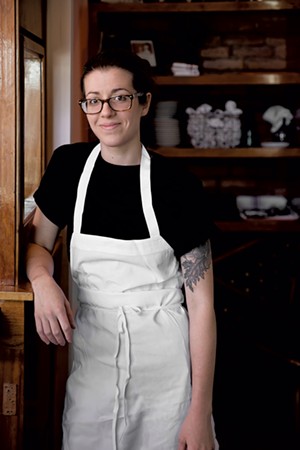
- Courtesy
- Amanda Wildermuth
Wildermuth's incredible doughnuts have a secret ingredient: audiobooks. They were the pastry chef's soundtrack at 3 a.m. on weekend mornings while she made the maple-fenugreek, salted chocolate-Urfa and passion fruit-olive oil delights that lines of customers waited for outside Honey Road's walk-up window, from September 2020 through August 2021.
"I would ... listen to hours and hours of audiobooks by myself in the kitchen," Wildermuth wrote by email. "Kind of a dream job."
The ones she liked best during that span were Drive Your Plow Over the Bones of the Dead by Olga Tokarczuk, Gold Diggers by Sanjena Sathian and Norse Mythology by Neil Gaiman. All of them, she reflected, mention or include themes of food and drink.
When she's not multitasking, Wildermuth prefers hard-copy books and collects vintage sci-fi paperbacks. Choosing favorite reads can feel blasphemous for a booklover, but Wildermuth was game. She listed Ursula K. Le Guin's The Left Hand of Darkness, which she described as "the adventures of a human emissary, on a mission among aliens on an ice planet (at its simplest)." Food isn't central to the story, she explained, but Le Guin clearly thought about what the characters would grow and eat — including hot beer, a much appreciated post-supper drink on an ice planet.
"An author who has built a world well has thought about these details, and I definitely notice them," Wildermuth wrote.
A more obvious setting for a fictional meal, and one of two that Wildermuth described in detail, is Muriel Barbery's Gourmet Rhapsody. The book recounts a food critic's deathbed reminiscences of a lifetime of memorable meals and his struggle to remember one flavor in particular — "the first and ultimate truth of my entire life." Spoiler: It turns out to be choux pastries from the supermarket.
"I appreciate that his most poignant memory was such a humble dish," Wildermuth wrote. "Despite having eaten many incredible and memorable meals in the best restaurants across the globe, these little plastic bagged pastries he ate as a child are what moved him most."
The critic's memory reminded Wildermuth of boxes of fastnachts, German potato doughnuts, that her grandmother would send every year at Lent. "They may have been a little stale from the mail and are certainly not the fanciest pastry I've ever had, but they are one of the best things I've ever tasted and one of my best food memories."
'The Unassuming Gourmand'
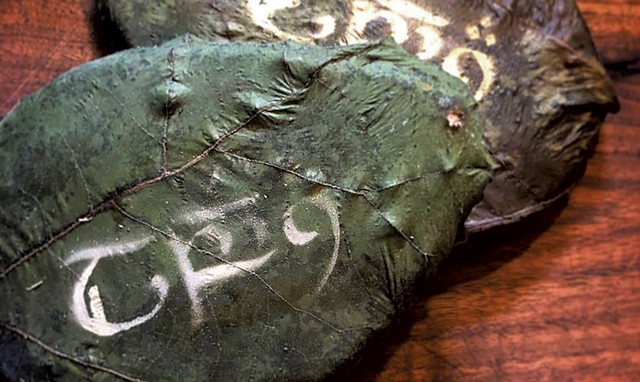
- Courtesy
- Lembas bread from Isole Dinner Club's Tolkien dinner
Wildermuth and Witting had one author in common when sharing their top fictional meals: J.R.R. Tolkien.
The Hobbit holds a special place in Wildermuth's heart, and she rereads it almost every year. In the first chapter, Bilbo Baggins finds himself unexpectedly hosting a throng of dwarves for tea — and seedcake, then beer, coffee, red wine, raspberry jam, apple tarts, mince pies, cheese, pork pies, salad, eggs, cold chicken and pickles.
"The dwarves trickle in slowly, raiding Bilbo's carefully curated larder until it is nearly empty, much to his distress," Wildermuth wrote. "Bilbo mourning every precious pantry item while he bustles around cleaning up after the dwarves is endlessly endearing and funny. And I love that this meal is the start to such a grand adventure, [with] Bilbo as the unassuming gourmand who stumbled into it."
To re-create the meal, Wildermuth would start with breads and cakes, such as seedcake, Bilbo's favorite. The cheese, beer and wine that he so carefully stocked would be easy to come by in Vermont, too.
"Honestly, I have most of these things in my pantry already," she wrote, "so send the dwarves my way, I guess."

- Courtesy of Richard Witting
- Menu from Isole Dinner Club's Tolkien dinner in 2018
When Witting hosted a Tolkien dinner in 2018, his menu included seedcake and beer, as well as "the flesh of he dared not guess what" and "grey maggoty bread."
"It really captured my imagination," Witting said. "And it was really freeing, because I started doing a thing where I was no longer writing menus that were necessarily true to what I was feeding you. I had an Orc course and a course designed around the Dark Land."
For any literary meal, Witting's menu development starts with a research phase, extracting all the food references he can find from the book. Then he turns to the author's biography, looking at where they grew up and lived to fill in the gaps. Finally, he turns to the real world and asks, "Can I source these things?"
With Tolkien's Lembas bread, it was a matter of invention. "There's no real-world equivalent," he said with a laugh. Only the elves know its secret recipe.
Comic Relief
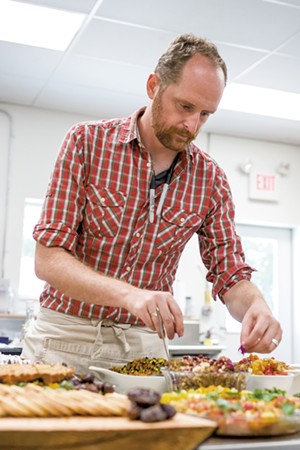
- File: Oliver Parini
- Richard Witting preparing food for an event in 2018
Witting started Isole in 2011 to explore culture through food while spicing up the Burlington food scene. He paused the supper club after a few years to return to school, earning a bachelor's degree in anthropology with a minor in English from the University of Vermont. Isole has been on hold again for the past two years due to the pandemic and because Witting is now back at UVM, pursuing a graduate degree in history focused on Vermont's food history.
"I used to be an avid reader for pleasure, but now I'm a graduate student," he joked.
Recently, he shared an excerpt from a G.I. Joe comic book on social media, crediting it with potentially launching his lifelong interest in food history. In the comic, Serpentor uses the genetic memory he possesses from famous historical leaders to recount how pizza was invented during the Roman Battle of Alesia.
"I remember reading it as a kid, not really having much context, and being like, 'Oh, my God. That's where pizza comes from,'" Witting said. "Looking back at that story, I realize that's literally what I'm doing with my life — trying to find interesting tales of how food and culture and history all weave together."
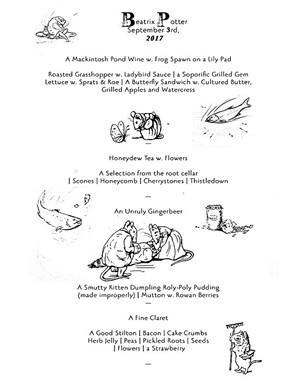
- Courtesy of Richard Witting
- Menu from Isole Dinner Club's Beatrix Potter dinner in 2017
Thinking once again of literary meals, Witting recalled the oh-so-tempting Turkish delight in C.S. Lewis' The Lion, the Witch and the Wardrobe from his childhood, as well as sugar on snow in Laura Ingalls Wilder's Little House on the Prairie, which he reread to his daughter not long ago.
The Beatrix Potter dinner, which was part of Isole's English literature-themed series, made his list of favorite fictional meals for a similar reason.
"My daughter was 2 at the time, and we were reading and watching The Tale of Peter Rabbit," Witting said. "In every one of Potter's talking animal-filled stories, the central theme is food: Someone's getting eaten, or someone wants to eat somebody."
Fittingly, Witting incorporated grasshoppers into the meal — roasted, with ladybird sauce — along with pond wine with frog spawn on a lily pad, a butterfly sandwich, and a soporific grilled gem lettuce with sprats and roe. Rabbit wasn't on the menu.

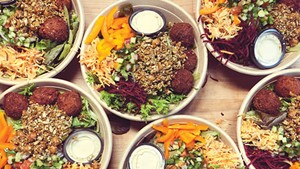
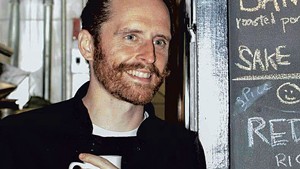









Comments
Comments are closed.
From 2014-2020, Seven Days allowed readers to comment on all stories posted on our website. While we've appreciated the suggestions and insights, right now Seven Days is prioritizing our core mission — producing high-quality, responsible local journalism — over moderating online debates between readers.
To criticize, correct or praise our reporting, please send us a letter to the editor or send us a tip. We’ll check it out and report the results.
Online comments may return when we have better tech tools for managing them. Thanks for reading.